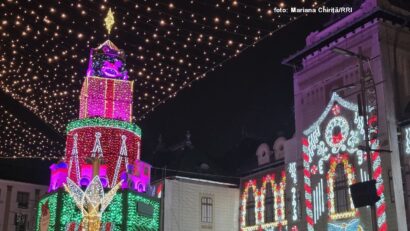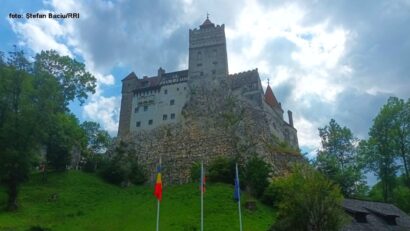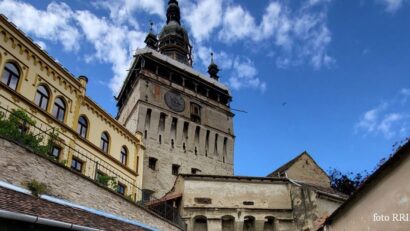Bucharest City Tour
Placed in the south of the country, Romania’s capital Bucharest has a history of over five centuries. It is both a family destination and one for lovers of adventure. Traian Badulescu, the manager of a travel agency, told us about why we should choose Bucharest as a travel destination:

Ana-Maria Cononovici, 24.07.2014, 13:55
Placed in the south of the country, Romania’s capital Bucharest has a history of over five centuries. It is both a family destination and one for lovers of adventure. Traian Badulescu, the manager of a travel agency, told us about why we should choose Bucharest as a travel destination:
“Bucharest is a very interesting city, with lots of opportunities for fun, culture, with good prices, with a growing number of festivals, including street events, and with a great night life. Not many cities have such a large number of shops, clubs and restaurants open all night long.”
Unfortunately, Bucharest city breaks have not been promoted regularly. This year, however, brings a novelty, and Traian Badulescu told us all about it:
“Israeli tourists are more and more interested in Bucharest and Romania as a holiday destination, and one of the largest tour operators in Israel has initiated a weekly charter flight between Tel Aviv and Bucharest. These are tourists interested mostly in cultural travel. The packages are for five days, with a couple of days spent in Bucharest, and the rest in Prahova Valley, mostly in Brasov.”
Traian Badulescu told us of a few places in Bucharest that should not be missed:
“A Bucharest city break can have interesting events all day long; first of all, Bucharest has plenty of sites worth a visit, some very visible, such as the famous Palace of Parliament, which is a point of pride as the second largest administrative building in the world after the Pentagon. Bucharest also has lots of museums, such as the Romanian Peasant Museum and the Village Museum. The architecture in the centre of Bucharest is quite attractive, especially on Victoria Road, which is part of the reason why the city used to be called Little Paris. We have more and more restaurants specialising in local cuisine. In the evening, the great attraction is the historic centre, which looks as that of any other European city, and which goes on 24 hours a day. Let us not forget that Bucharest also has a very rich cultural life, lots of festivals, lots of shows, and if you are interested in theatre, opera and concerts, you can enjoy a very rich calendar. We also have the Radio Hall, the Romanian Athenaeum, the Romanian Opera, and here a ticket is much cheaper that in other cities with tradition, such as Paris, Vienna, Milan and Rome.”
If you want to discover the culture, history and tradition of Bucharest in a single trip, starting in May you can just hop onto the buses crossing the city, stopping over at any site that draws your attention. Brandusa Receanu is a spokeswoman for the Bucharest Public Transport Authority:
“The double-decker bus tour is great, it offers a new perspective, a different angle to see the city from. If you take it, you can see most of the major sites of the city, both cultural and historical. The tour is 15.4 km long, with 14 stops. The bus leaves from Press Square, reaches the Village Museum, you can see the Triumphal Arch, then it goes to Victoria Square, then we reach the centre of the town, going to the Parliament Palace. From there it goes to Union Square, turning towards University Square, Romana Square, then Victoria Road, Charles de Gaulle Square, then turns towards Press Square, via Kiseleff Boulevard. The central area of the city gets the most exposure. The fares are the same as in the previous years, 25 lei for an adult, 10 lei for children between 7 and 14, while children under seven get a free ride.”
We will look next at some of the sites tourists pass by during their Bucharest City Tour. As you climb on the bus, you get a map of the circuit, and also an audio guide in English, French and Italian. At stop number 3 you can see the Triumphal Arch, built between 1921 and 1922 based on the design of the Arc de Triomphe in Paris. In stop 4 you can find the Romanian Peasant Museum, a building in the neo-Romanian style, built between 1912 and 1941. Also here you can visit the Grigore Antipa Natural History Museum, depicting the dynamic of life on Earth since its emergence. In stop number 5 you can see the Cretzulescu Church, one of the most valuable examples of religious architecture in the city dating back to the late Brancoveanu period. Also in this area you can see the Romanian Athenaeum, a symbol of national culture, built 120 years ago, as well as the Royal Palace, the former residence of King Carol II today housing the National Museum of Art, which is considered the most important art museum in the country. Brandusa Raeceanu is back with details about the bus tour:
“The ticket is valid for 24 hours, so that you can visit the restaurant or beer hall of your choice, or the museum you want to visit and then get back on the bus. The double-decker bus run between 10 AM and 10 PM.”
For your evening schedule you have a wide selection of shows, traditional restaurants or a modern club, satisfaction guaranteed.






























